► The new BMW X3 by M Division
► A Macan, GLC 63, Stelvio QF rival
► Muscly 503bhp in a mid-sized SUV!
The BMW X3 M is the first fully fledged M division effort in this sector, after a series of M Performance models. As you might expect, it’s no sluggard – with the 503bhp straight six that’ll also power next year’s new BMW M3 and M4. But while a sledgehammer engine might make sense in a sports saloon or coupe, does it add up in a mid-weight SUV?
We’re a fan of the regular BMW X3, but we’ve now tested the new M model in the UK, as well as on the international launch: read on for our fully updated review.
It counts cars like the Porsche Macan, Mercedes-Benz GLC 63 and Alfa Romeo Stelvio Quadrifoglio as rivals – and to give it the best possible fighting chance, Munich has smuggled its most powerful six-pot production engine in history and plopped it in the engine bay.
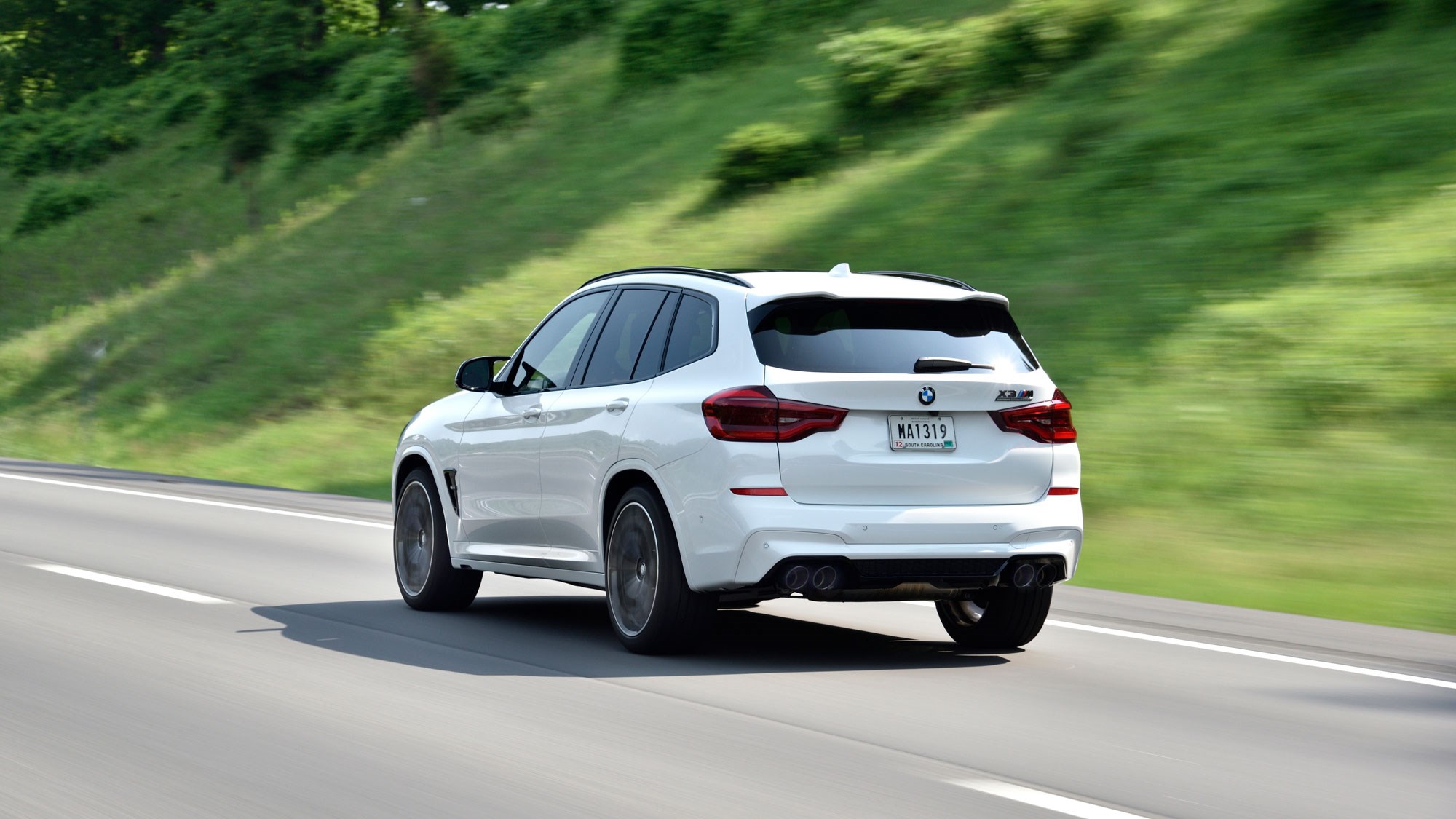
It’s enough for some pretty startling, sports car-troubling performance claims, with 0-62mph taking a whisker over four seconds…
Tell me more about that BMW X3 M engine!
Displacing three litres and boosted by two independent monoscroll turbochargers the X3 M produces 503bhp and 443lb ft of torque in Competition specification. The standard car makes 474hp, but that won’t be coming to the UK.
It’s a brand new engine, sharing only 10% of its parts with the BMW X3 M40i. Technical highlights include a cylinder head with a 3D printed element for lightness and better heat displacement, plus a seriously beefed-up cooling system with three radiators and a pair of oil coolers.
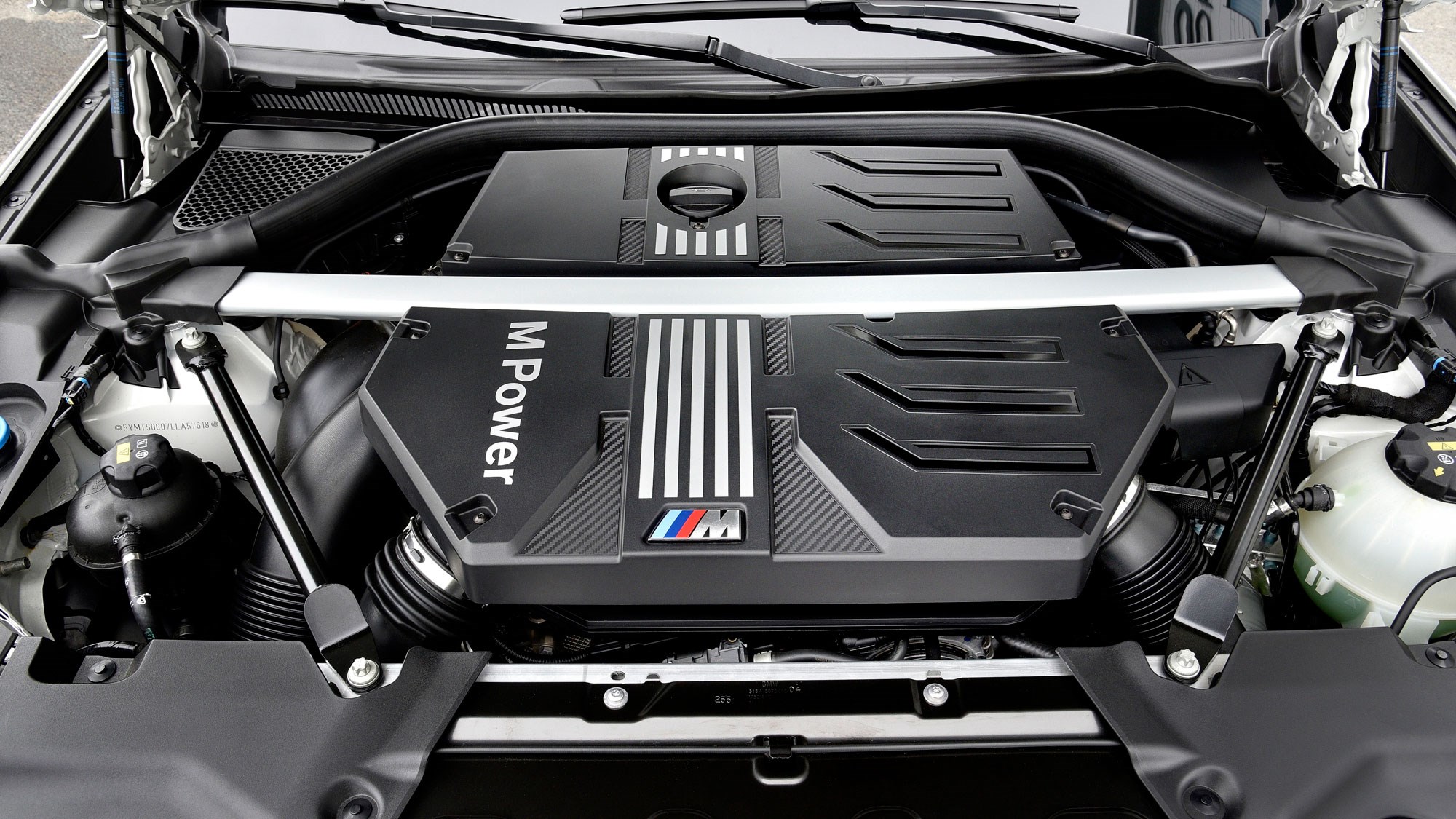
Higher pressure injectors leap from 200 to 350 bar and the oil sump features a clever channel design and pump to stop lubricant pooling at one end under acceleration and cornering. Inside, the crankshaft and pistons are forged for extra strength and hunger for revs, while the turbo housing is built into the exhaust manifold to save weight. Plus it looks cool.
BMW’s engineers said this unit runs at ‘just’ 2.3 bar of boost pressure in the X3 M, less than you’d expect considering those significantly strengthened internals, which hints at some serious power gains to be unlocked in the future. Such as when it gets dropped into the next M3.
So what’s it like in the X3 M?
Way less unstressed than that high specific output would suggest, with omnipresent torque from 2600rpm to nearly 6k. Peak power arrives at 6250rpm and is maintained right up to the 7200rpm redline. It literally plateaus for 1000rpm – almost as if its true potential is being held back for a future car.
Anyway, the result of all of this is that the X3 M feels as stout as a redwood across a huge spread of engine speeds, from barely any revs to that distinctly un-turbocharged redine, with a tangible benefit to revving it out. As such it’s alarmingly fast – taking 4.1 seconds to crack 0-62mph and going on to 177mph, if derestricted.
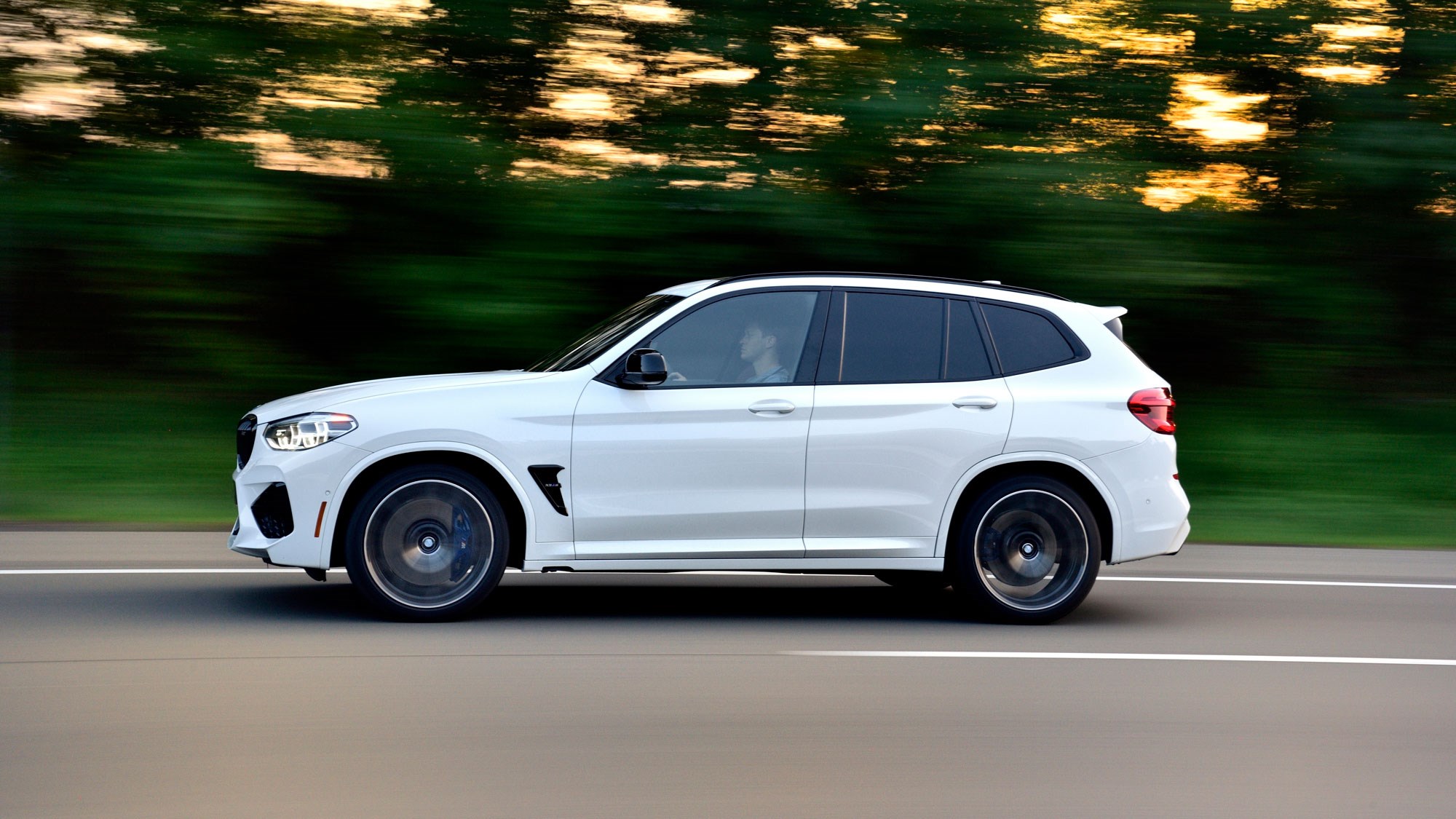
Sounds good too – despite the forced induction and the fact it also features two gasoline particulate filters and four catalytic converters – the Competition-standard M Sport exhaust system delivers a pleasing soundtrack through its pair of double tailpipes, full of burble and bass at tickover and soaring soprano in its upper reaches.
Power is sent through the latest-generation M Steptronic eight-speed transmission – while undeniably effective at rattling off gearshifts, it’s not particularly exciting to use, with too-smooth shifts in all three of its ferocity modes and shift paddles that flap rather than clunk positively with each pull.
It sounds like an odd complaint because the stepless changes bring about great stability on track and even when driving hard on the road, but sometimes you’d like a Patrick Swayze-style roundhouse to the spine in response to a full-bore upshift to remind you that you’re driving a car with more than 500hp, right?
Sounds uncomfortable…
Yes, and that brings us onto the chassis, which is best described as purposefully firm. We drove the 21-inch wheel-equipped Competition model on cracked New Jersey tarmac not unlike the roads we get in the UK and even in Comfort mode, the adaptive steel suspension is keen to let you know exactly how sharp-edged the defect you just rode over was.
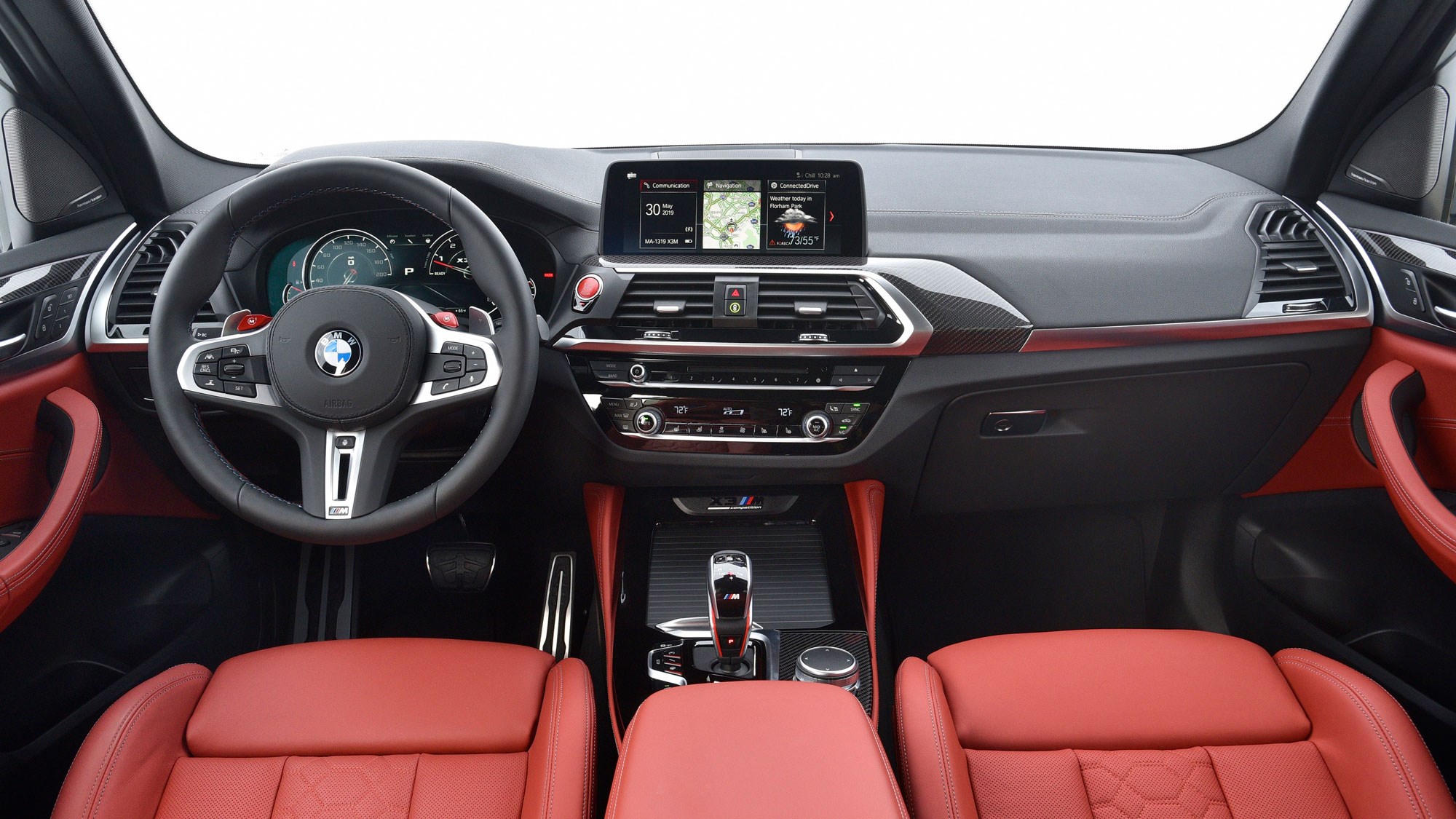
We’ve now driven it in the UK, too, and can confirm that the BMW X3 M rides stiffly across most road surfaces. On the big rims, it just lacks some of the pliancy needed to cope with broken blacktop.
It’s not unusable but those after a powerful, everyday X3 will be better served by one of the faster models in the standard range. That’s a bit of a shame because that burly, flexible engine coupled with a cushy, air suspended ride and decent space for four adults would have made the X3 M a hilariously good long-distance cruiser.
That’s not really what M Division is about though, is it? Despite being an SUV, this car is principally (apparently) a focused cornering machine designed to thrill owners on a circuit as well as on the road. BMW’s engineers claim it should drive like an M3, only a bit higher up.
Does it?
Changes to the chassis include a fettled front end with unique swivel bearings, torque arms and wishbones, plus elastomer bearings and more camber for stability. There’s also a hefty strut brace in the engine bay, additional underbody bracing and M-specific anti-roll bars, which quell body movements well. Adaptive dampers adjust depending on surface or can be manually tweaked with Comfort, Sport and Sport+ modes.
Huge brakes borrowed from the M760i haul the X3 M up effectively but did start to get a bit long in the pedal after four (admittedly quite long) laps at Monticello Motor Club. Carbon ceramics are not available either – too expensive for this market, says BMW.
The xDrive system is biased towards the rear, and dynamic stability control plus an Active M Differential help to put that power down, for the most part, while avoiding having to shunt it to the front wheels. Traction is peerless in most everyday driving conditions.
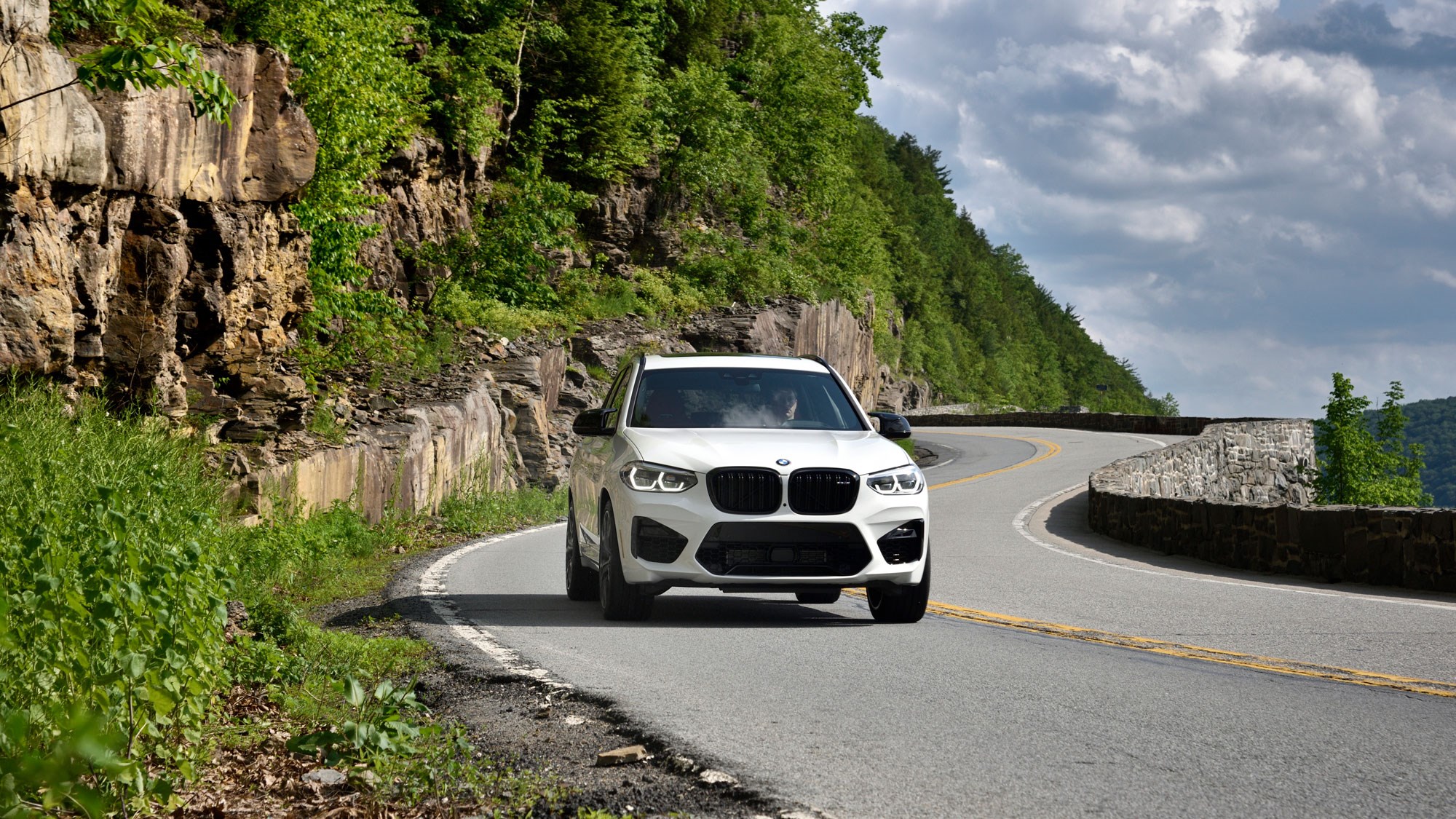
There’s no two-wheel drive drift-mode like you get with the M5, but the X3 M is principally a rear-driver. Despite this being the latest generation of xDrive you can still sense power moving around under you – it’s not abrupt but it’s far from natural, although the mid-corner traction it summons up is remarkable.
When you’d rather explore the limits of grip yourself there is the clever M Dynamic Mode –which winds off the DSC interference and activates the M xDrive 4WD Sport setting, shifting more power aft. Do so and the rear of the X3 M feels very involved, allowing you to steer on the throttle or tuck the nose into the apex when you’ve been a bit ambitious with your entry speed.
We can’t believe we’re writing this in an SUV review, but smooth oversteer is available if you pin the front end and commit with the throttle – anything less results in the car hopping and skipping along sideways on its outside wheel before the DSC pulls everything into a straight line. There’s a pervasive sense of something – the AWD or traction control – just waiting to come and tidy up after you that sets this apart from a proper rear-wheel drive car.
Altogether we’d say the BMW is not quite as tail-happy as a Porsche Macan or Alfa Romeo Stelvio, but loads more adjustable than an Audi SQ5. A neatly happy medium that inspires confidence, which will lead to fast lap times and a smile on your face.
But who the hell ever takes their SUV on a track day?
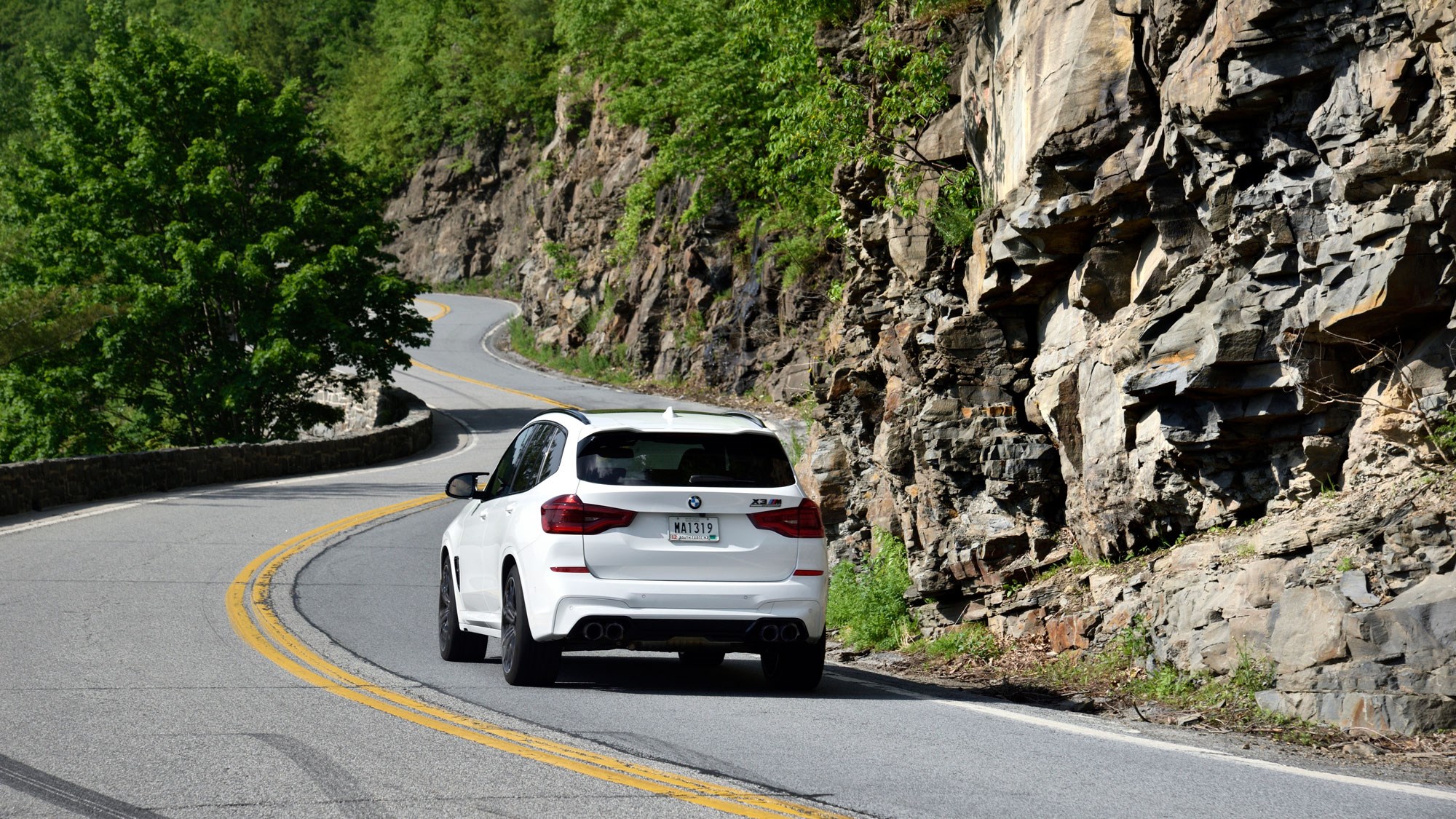
Back to more sensible matters, and the X3 scores highly. It’s a well rounded package, with plenty of space for five adults (no three rows of seats here) and a decent sized boot. Larger families or those wanting maximum space may wish to trade up to an X5, but we prefer the more bijou dimensions of the X3.
It’s all the car many families will need, but we’re just not quite sure if the M model masters its all-things-to-all-people brief…
BMW X3 M: verdict
An M Division engineer we spoke to said they set up fast SUVs with exactly the same ethos as their saloons, so an M3 driver that needs a bit of extra ride height to negotiate a long, rutted driveway should feel right at home in an X3 M.
In truth, there are always going to be compromises when you boost the ride height and start sending power to the front and rear wheels, and this SUV is no exception to that. As a driver’s car, the X3 M is up there with the Macan – the Porsche offering a more raw, engaging drive; the BMW more stable, confidence-inspiring and ultimately satisfying if you’re chasing after fast lap times. It’s just a bit too bouncy and stiff-riding for our tastes in the UK.
That engine is a real treat, though – generating huge power throughout the rev range and doing so in a linear, boost-free way that feels distinctly un-turbocharged. Roll on, the new M3.
More BMW reviews by CAR magazine